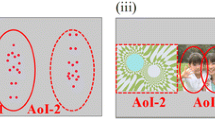Abstract
Based on clinical observations of abnormal gaze behavior of autistic children, it has been suggested that autistic children have a problem in processing social information. Several studies on eye movements have indeed found indications that children with autism show particularly abnormal gaze behavior in relation to social stimuli. However, the methodology used in such investigations did not allow for precise gaze analysis. In the present study, the looking behavior of autistic children toward cartoon-like scenes that included a human figure was measured quantitatively using an infrared eye-tracking device. Fixation behavior of autistic children was similar to that of their age- and IQ-matched normal peers. These results do not support the notion that autistic children have a specific problem in processing socially loaded visual stimuli. Also, there is no indication for an abnormality in gaze behavior in relation to neutral objects. It is suggested that the often-reported abnormal use of gaze in everyday life is not related to the nature of the visual stimuli but that other factors, like social interaction, may play a decisive role.
Similar content being viewed by others
REFERENCES
Baranek, G. T. (1999). Autism during infancy: A retrospective video analysis of sensory-motor and social behaviors at 9–12 months of age. Journal of Autism and Developmental Disorder, 29, 213–224.
Briskman, J., Happe, F., & Frith, U. (2002). Exploring the cognitive phenotype of autism: weak “central coherence” in parents and siblings of children with autism: II. Real-life skills and preferences. Journal of Child Psychology and Psychiatry, 42,309–316.
Buitelaar, J. K., & van der Gaag, R. J. (1998). Diagnostic rules for children with PDD-NOS and multiple complex developmental disorder. Journal of Child Psychology and Psychiatry, 39,911–919.
Buitelaar, J. K., van der Gaag, R. J., Klin, A., & Volkmar, F. (1999). Exploring the boundaries of pervasive developmental disorder not otherwise specified: Analyses of data from the DSM-IV Autistic Disorder Field Trial. Journal of Autism and Developmental Disorder, 29,33–43.
Buswell, G. T. (1936). How people look at pictures: a study of the psychology of perception in art.Chicago: The University of Chicago Press.
Dawson, G., Meltzoff, A. N., Osterling, J., Rinaldi, J., & Brown, E. (1998). Children with autism fail to orient to naturally occurring social stimuli. Journal of Autism and Developmental Disorder,28,479–485.
Happe, F., Briskman, J., & Frith, U. (2001). Exploring the cognitive phenotype of autism: Weak “central coherence” in parents and siblings of children with autism: I. Experimental tests. Journal of Child Psychology and Psychiatry, 42, 299–307.
Hutt, C., & Ounsted, C. (1966). The biological significance of gaze aversion with particular reference to the syndrome of infantile autism. Behavioral Sciences, 11,346–356.
Lord C., Rutter M., & Le Couteur A. (1994). Autism Diagnostic Interview-Revised: A revised version of a diagnostic interview for caregivers of individuals with possible pervasive developmental disorders. Journal of Autism and Developmental Disorder, 24,659–685.
Manor, B. R., Gordon, E., Williams, L. M., Rennie, C. J., Bahramali, H., Latimer, C. R., Barry, R. J., & Meares, R. A. (1999). Eye movements reflect impaired face processing in patients with schizophrenia. Biological Psychiatry, 46, 963–969.
Minshew, N. J., Goldstein, G. & Siegel, D. J. (1997). Neuropsychologic functioning in autism: Profile of a complex information processing disorder. Journal of the International Neuropsychological Society, 3,303–316.
Noton, D., & Stark, L. (1971). Scanpaths in eye movements during pattern perception. Science, 171,308–311.
Rutter, M. (1978). Diagnosis and definition. In M. Rutter & E. Schopler (Eds.), Autism: a reappraisal of concepts and treatment.New York: Plenum Press.
Rutter, M., & Schopler, E. (1987). Autism and pervasive developmental disorders: Concepts and diagnostic issues. Journal of Autism and Developmental Disorder, 17,159–186.
Schultz, R. T., Gauthier, I., Fulbright, R. K., Anderson, A. W., Volkmar, F., Skudlarski, P., Lacadie, C., Cohen, D. J., & Gore, J. C. (2000). Abnormal ventral temporal cortical activity during face discrimination among individuals with autism and Asperger syndrome [see comments]. Archives of General Psychiatry, 57,331–340.
Sigman, M., Mundy, P., Sherman, T., & Ungerer, J. (1986). Social interactions of autistic, mentally retarded and normal children and their caregivers. Journal of Child Psychology and Psychiatry, 27, 647–655.
Swettenham, J., Baron-Cohen, S., Charman, T., Cox, A., Baird, G., Drew, A., Rees, L., & Wheelwright, S. (1998). The frequency and distribution of spontaneous attention shifts between social and nonsocial stimuli in autistic, typically developing, and nonautistic developmentally delayed infants. Journal of Child Psychology and Psychiatry, 39, 747–753.
Volkmar, F. R., & Mayes, L. C. (1990). Gaze behavior in autism. Development and Psychopathology, 2, 61–69.
Willemsen-Swinkels, S. H., Buitelaar, J. K., Weijnen, F. G., & van Engeland, H. (1998). Timing of social gaze behavior in children with a pervasive developmental disorder. Journal of Autism and Developmental Disorder, 28, 199–210.
Yarbus, A. L. (1967). Eye movements and vision.New York: Plenum Press.
Author information
Authors and Affiliations
Corresponding author
Rights and permissions
About this article
Cite this article
van der Geest, J.N., Kemner, C., Camfferman, G. et al. Looking at Images with Human Figures: Comparison Between Autistic and Normal Children. J Autism Dev Disord 32, 69–75 (2002). https://doi.org/10.1023/A:1014832420206
Issue Date:
DOI: https://doi.org/10.1023/A:1014832420206




